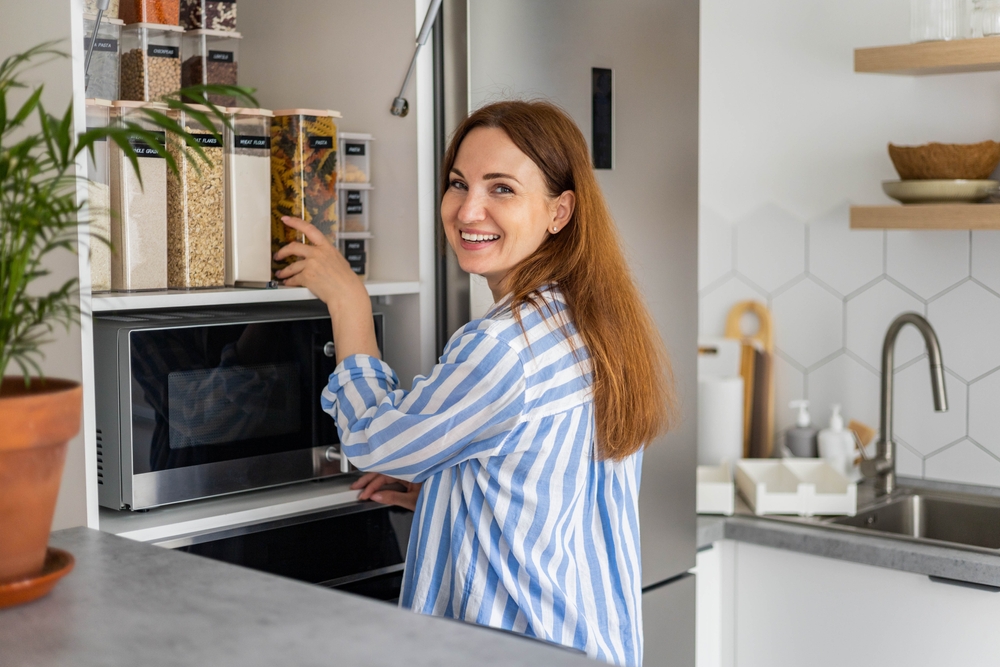An efficiently organized kitchen is the cornerstone of a well-run home and can be a game-changer in your culinary experiences. Whether you’re an avid home cook or someone who occasionally whips up a meal, an organized kitchen can save you time, reduce stress, and make cooking a more enjoyable activity. Imagine finding everything you need within seconds and having a place for every gadget, utensil, and ingredient. The process of organizing your kitchen can seem daunting, but with a strategic approach, it’s both achievable and rewarding. Here’s the ultimate guide to transforming your kitchen into a model of efficiency.
Declutter the Space
The first step in organizing your kitchen is to declutter. Over time, kitchens can become a repository of gadgets and items that are seldom used. Here’s how to tackle it:
- Purge Unnecessary Items: Begin by removing everything from your cabinets and drawers. Assess each item critically—if it’s not used at least once every three months, consider donating or discarding it.
- Evaluate Appliances: Do you really need that bread maker or ice cream machine? Only keep appliances you use frequently.
- Minimalize Your Cookware: Keep versatile cookware. For instance, a high-quality non-stick skillet can perform many functions, reducing the need for specialized pans.
- Sort Through Containers: Recycle or donate plastic containers without lids or ones that are rarely used. Invest in stackable, nestable options to save space.
Organize by Zones
Once you’ve decluttered, it’s time to strategically arrange your items. Creating designated zones helps maintain order and enhances kitchen efficiency.
- Food Preparation Zone: This should include cutting boards, knives, mixing bowls, and measuring tools, ideally close to the counter space where you do most of your preparation.
- Cooking Zone: Place pots, pans, spatulas, and hot pads near the stove. Ensure that essential cooking oils, spices, and utensils are within arm’s reach.
- Cleaning Zone: Organize cleaning supplies under the sink. Keep dish soaps, sponges, and cleaning sprays together for easy access.
- Storage Zone: Allocate a section for containers and wraps. This can be a drawer or cabinet where you store foil, plastic wrap, and storage bags.
- Food Storage Zone: Create an efficient pantry system with dry and canned goods categorized and neatly arranged.
Make Use of Vertical and Hidden Spaces
To maximize kitchen space, think vertically and utilize any hidden spaces:
- Install Shelves: Add shelves inside cabinets or on blank walls to store items that don’t fit in cabinets.
- Use Cabinet Doors: Mount racks or hooks on the inside of cabinet doors to store pot lids or cleaning supplies.
- Hang Pots and Pans: Consider a hanging rack for pots and pans if you have limited cabinet space.
- Magnetic Knife Holder: A magnetic strip on the wall can free up counter or drawer space by storing knives.
Optimize Storage Solutions
The right storage solutions can dramatically improve kitchen efficiency. Tailor your selections to fit your space and cooking habits.
- Clear Storage Containers: Use clear containers to store dry goods in the pantry. Label them for instant identification.
- Drawer Organizers: Customizable organizers can help keep kitchen drawers neat by separating utensils, gadgets, and small items.
- Lazy Susans: These rotating trays are perfect for awkward pantry corners, allowing you to see and reach items easily.
- Pull-Out Shelves: Retrofit cabinets with pull-out shelves or drawers to access items at the back without a hassle.
- Tiered Shelving: Use tiered racks for spices or canned goods to easily see and access everything in your pantry or cabinet.
Streamline Workflows
Efficient workflows reduce the time spent searching for items or preparing meals. By organizing with fluidity in mind, meal preparation becomes much smoother.
- Group Similar Items: Keep all baking supplies together in one cabinet, and all grilling tools in another. This minimizes time spent searching for items while in the midst of cooking or baking.
- Label Everything: Use labels on jars, containers, and shelves to ensure everyone using the kitchen knows where items belong.
- Re-evaluate Routinely: Once your kitchen is organized, take the time every few months to re-evaluate and adjust as necessary. Your needs might change over time, and your organization should adapt accordingly.
Cultivate Efficient Habits
Maintaining an organized kitchen requires cultivating efficient habits. Integrate these into your routine to keep your kitchen in top shape.
- Clean as You Cook: Instead of letting dishes pile up, clean utensils and surfaces as you finish using them. This habit keeps your kitchen functional and tidy.
- Weekly Inventory Checks: Regularly check your pantry, fridge, and freezer for expired items and make note of ingredients running low before grocery shopping.
- Return Items Promptly: Get into the habit of putting things back in their designated spots immediately after use to avoid clutter creeping back in.
- Meal Planning: By planning meals in advance, you can ensure that your kitchen is stocked with only what you need, reducing unnecessary clutter.
A streamlined, organized kitchen is more than just an aesthetic accomplishment. It contributes to more efficient cooking practices and less stress during meal preparation. By decluttering, establishing designated zones, and optimizing storage, you’ll transform your kitchen into a haven of efficiency. It’s not just about tidiness; it’s about creating a space that works best for you and enhances your culinary endeavors. Embrace this transformation, and enjoy a more productive and pleasurable cooking environment.



